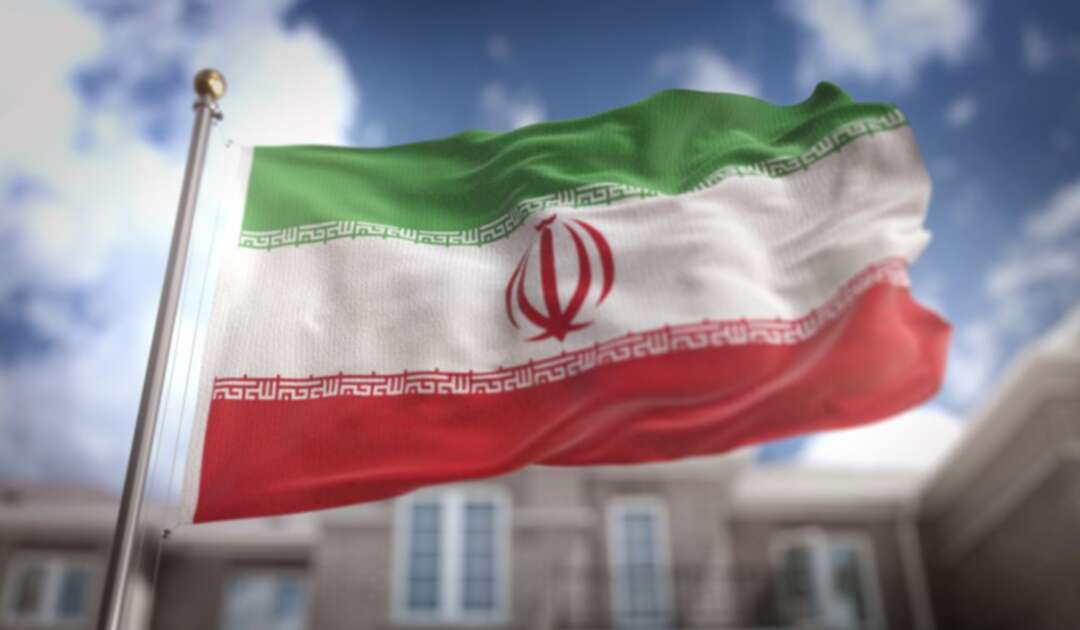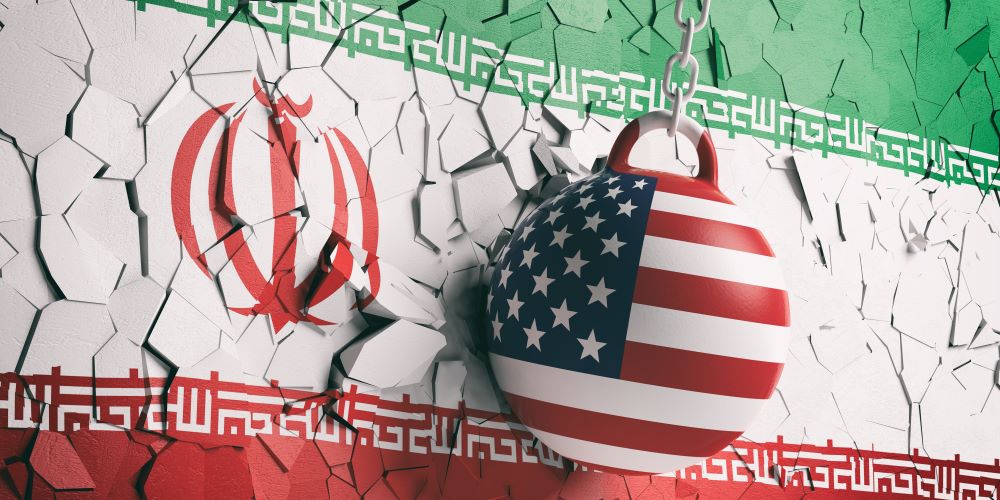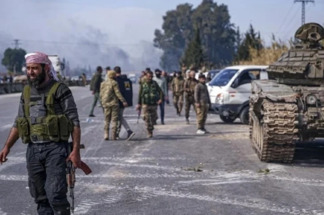-
Land subsidence is a serious threat to large areas of Iran

But according to the “Intel Lab research institute”, this phenomenon is like a "slow and silent ticking bomb" around Tehran and " thus endangering a growing population of 13 million inhabitants and its critical infrastructures." Based on this analysis, with 36 cm of subsidence per year, Tehran ranks first in the world.
According to Ali Saberi, an environmental expert, in an interview with the Social Group’s Human Habitat reporter of the Young Journalists Club, Iran's land subsidence is much more critical than other countries.
Of course, the most important reasons for this problem are the mismanagement of water resources and the unprincipled and illogical exploitation of these resources by digging deep wells without control by agricultural and industrial institutions affiliated with the regime officials, especially the Revolutionary Guards Corps (IRGC).
The intensity of subsidence in some plains of Iran, including Tehran, is at least 90 times higher than the most critical conditions in developed countries.
Mohammad Javad Blourchi, director of Geology, Engineering, Hazards and Environment of the Organization of Geology and Mineral Explorations of Iran, says, "The rate of land subsidence in the world is usually 4 mm per year, and in developed countries, this rate is considered critical." However, the trend of subsidence increase in Iran is such that in parts of southwestern Tehran, has reached an annual rate of about 36 cm, which is a global record. Based on this rate, the ground level in these areas will decrease by 3.6 meters in the next 10 years.
 Iran
IranAccording to experts, land subsidence is even more harmful than earthquakes. Because when an earthquake occurs in a city, it is finally rebuilt after a few years, but a city that is destroyed by subsidence and its aquifer is drained can no longer be rebuilt no matter how much energy and investment is spent.
In addition to the irreversible destruction of the underground resources, this subsidence could lead to accidents and catastrophes in critical infrastructures such as refineries, power plants, energy transmission lines such as gas & electricity, transportation facilities, railways, airports, bridges, roads, industries, and factories.
In such conditions, underground gas, sewage, and water pipes and on the ground surface of urban areas such as residential and office structures, roads, rails, canals, etc. may get damaged or even destroyed under the pressure of these bends.
Today, the plains that have split or sank are the result of ineffective programs implemented in these regions over the past 20 years; under the pretext of economic development that has not resolved any serious economic benefits for Iranians. Because currently 90% of Iran's water capacity is spent on agriculture, which provides only 17% of the country's employment. On the other hand, only 2% of water is consumed in the industrial sector, while 50% of employment is in this sector.
These days, the extent of the destruction of this subsidence in some parts of Iran, such as Isfahan, is more evident than in other parts due to the destructive policies of the regime and the drying up of the main water source of this province, the Zayandehrud River.
According to Isfahan Geological Survey’s statistics and information, 10% of this province’s total area is affected by land subsidence.
Many historical monuments in Isfahan, such as Khajoo Bridge, Wooden Bridge, and Naghsh Jahan Square, have suffered deep cracks and are in serious danger of destruction. Also, the gap caused by this subsidence has reached near the runway of this city’s airport and according to some sources, it has tilted the control tower of the airport by 3 degrees.
The air force town located in the Khaneh area of Isfahan, where 6,000 people used to live, had to be evacuated due to subsidence and is now uninhabited.
Isfahan media is now full of names and photos of new neighborhoods and historic buildings in the city that have suffered major cracks due to land subsidence.
In an interview with ISNA, Dr. Ali Beitollahi, director of the Earthquake and Risk Department of the Road, Housing, and Urban Development Research Center, stressed that the Ministry of Energy and the Ministry of Jihad for Agriculture are among the main culprits. According to him, if the officials of these two institutions knew about the phenomenon of subsidence, they should not have caused it by allowing the improper use of groundwater, and if they did not know, it is unfortunate that the main authorities of the country are unaware of this phenomenon.
Mohammad Javad Blourchi, a geologist and former spokesperson for the Geology Organization, said: "I think today is too late to think about restoring our aquifers and underground aqueducts because we have destroyed the aquifers of the country's plains and the subsidence has destroyed the cavities that form the aquifer. It was our great concern and we had been shouting for years but no one was paying attention.
by: Cyrus Yaqubi
Cyrus Yaqubi is a Research Analyst and Iranian Foreign Affairs Commentator investigating the social issues and economy of the Middle East countries in general and Iran in particular.
You May Also Like
Popular Posts
Caricature
BENEFIT Sponsors BuildHer...
- April 23, 2025
BENEFIT, the Kingdom’s innovator and leading company in Fintech and electronic financial transactions service, has sponsored the BuildHer CityHack 2025 Hackathon, a two-day event spearheaded by the College of Engineering and Technology at the Royal University for Women (RUW).
Aimed at secondary school students, the event brought together a distinguished group of academic professionals and technology experts to mentor and inspire young participants.
More than 100 high school students from across the Kingdom of Bahrain took part in the hackathon, which featured an intensive programme of training workshops and hands-on sessions. These activities were tailored to enhance participants’ critical thinking, collaborative problem-solving, and team-building capabilities, while also encouraging the development of practical and sustainable solutions to contemporary challenges using modern technological tools.
BENEFIT’s Chief Executive Mr. Abdulwahed AlJanahi, commented: “Our support for this educational hackathon reflects our long-term strategic vision to nurture the talents of emerging national youth and empower the next generation of accomplished female leaders in technology. By fostering creativity and innovation, we aim to contribute meaningfully to Bahrain’s comprehensive development goals and align with the aspirations outlined in the Kingdom’s Vision 2030—an ambition in which BENEFIT plays a central role.”
Professor Riyadh Yousif Hamzah, President of the Royal University for Women, commented: “This initiative reflects our commitment to advancing women in STEM fields. We're cultivating a generation of creative, solution-driven female leaders who will drive national development. Our partnership with BENEFIT exemplifies the powerful synergy between academia and private sector in supporting educational innovation.”
Hanan Abdulla Hasan, Senior Manager, PR & Communication at BENEFIT, said: “We are honoured to collaborate with RUW in supporting this remarkable technology-focused event. It highlights our commitment to social responsibility, and our ongoing efforts to enhance the digital and innovation capabilities of young Bahraini women and foster their ability to harness technological tools in the service of a smarter, more sustainable future.”
For his part, Dr. Humam ElAgha, Acting Dean of the College of Engineering and Technology at the University, said: “BuildHer CityHack 2025 embodies our hands-on approach to education. By tackling real-world problems through creative thinking and sustainable solutions, we're preparing women to thrive in the knowledge economy – a cornerstone of the University's vision.”
opinion
Report
ads
Newsletter
Subscribe to our mailing list to get the new updates!





















